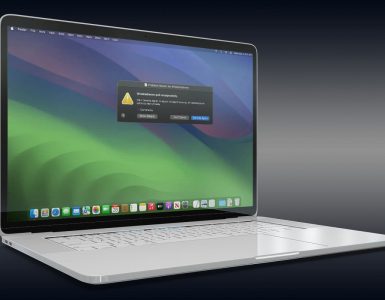The ATmega328P microcontroller is a popular choice for DIY electronics projects, thanks to its versatility and affordability. It’s the brain behind many Arduino boards, making it a go-to option for hobbyists and professionals alike. One crucial aspect of the ATmega328P is its bootloader, a small program that allows you to upload and execute code on the microcontroller without needing a dedicated programmer.
In this comprehensive guide, we will explore the world of ATmega328P bootloaders, demystifying the process of burning the bootloader and unlocking the full potential of this powerful microcontroller. Whether you’re a seasoned electronics enthusiast or just starting your journey, this article will provide you with the knowledge and skills needed to harness the power of the ATmega328P bootloader.
Understanding Bootloaders and Their Importance
Before diving into the specifics of the ATmega328P bootloader, let’s delve deeper into the concept of bootloaders and their significance in the world of microcontrollers.
A bootloader is essentially a small program that resides in the microcontroller’s memory. Its primary purpose is to facilitate the uploading and execution of user code onto the microcontroller without the need for an external programmer. Instead of relying on a dedicated hardware programmer, a bootloader allows you to utilize the microcontroller’s built-in serial communication capabilities, such as UART or USB, to upload new firmware.
The bootloader acts as an intermediary between your computer and the microcontroller, establishing a communication link that enables you to transfer your code effortlessly. This eliminates the need for complex wiring or specialized hardware, making the programming process much more accessible to both beginners and experienced developers.
One of the key benefits of using a bootloader is its ability to provide over-the-air (OTA) updates. Once the bootloader is in place, you can easily update the firmware on your microcontroller remotely, without the need to physically connect it to a computer. This feature is particularly useful when working with embedded systems that may be deployed in remote locations or hard-to-reach areas.
Bootloaders also offer flexibility and versatility in programming. They allow you to upload code in various formats, such as Intel Hex or binary files, providing compatibility with a wide range of development environments and programming languages. This flexibility empowers developers to choose the tools and platforms that suit their specific needs and preferences.
Moreover, bootloaders often incorporate features like error checking, automatic baud rate detection, and data integrity verification during the upload process. These mechanisms ensure the reliability and integrity of the uploaded code, minimizing the risk of data corruption and enhancing overall system stability.
Another advantage of bootloaders is their ability to occupy a relatively small portion of the microcontroller’s memory, leaving ample space for your application code. This efficient use of memory resources allows you to make the most of the microcontroller’s capabilities and incorporate complex functionality into your projects.
Furthermore, bootloaders offer a significant advantage in terms of debugging and troubleshooting. Since they establish a communication channel with your computer, you can easily monitor and debug your code in real-time using a serial monitor or debugging tools. This visibility into the inner workings of your code can greatly expedite the development process and help identify and rectify issues more efficiently.
In summary, bootloaders play a crucial role in the programming ecosystem of microcontrollers like the ATmega328P. They simplify the code uploading process, provide OTA update capabilities, offer flexibility in programming, enhance reliability and stability, optimize memory usage, and facilitate debugging and troubleshooting. By understanding and harnessing the power of bootloaders, you can unlock the full potential of your microcontroller and bring your projects to life with greater ease and efficiency.

Preparing Your Environment for Burning the Bootloader
Before you can start burning the bootloader onto the ATmega328P microcontroller, it’s crucial to ensure that your programming environment is properly set up. This section will guide you through the essential tools, software, and hardware components required for a smooth and successful burning process.
- Selecting the Programmer: The first step is to choose the appropriate programmer for your specific needs. There are several options available, including USBasp, Arduino as ISP, AVRISP mkII, and many more. Each programmer has its own set of features and compatibility, so it’s essential to research and select one that aligns with your requirements. Consider factors such as cost, availability, ease of use, and compatibility with your computer and microcontroller;
- Installing the Software: Once you have chosen a programmer, the next step is to install the necessary software for burning the bootloader. The most common software used in conjunction with ATmega328P is the Arduino IDE (Integrated Development Environment). It provides a user-friendly interface, a vast library of pre-existing code, and seamless integration with Arduino boards. Download and install the Arduino IDE from the official Arduino website, ensuring that you select the appropriate version for your operating system;
- Connecting the Hardware: To establish a connection between your programmer and the ATmega328P microcontroller, you’ll need to make the necessary hardware connections. This typically involves connecting various pins on the programmer to specific pins on the microcontroller. Refer to the documentation provided with your programmer for the pin connections required. Additionally, ensure that the microcontroller is correctly powered, either through an external power source or via the programmer itself;
- Setting Up the Arduino IDE: Launch the Arduino IDE and navigate to the “Tools” menu. From here, you’ll need to configure the IDE to work with your programmer and microcontroller. Select the appropriate programmer from the “Programmer” submenu, and choose the correct board variant (e.g., Arduino Uno) that utilizes the ATmega328P microcontroller. Ensure that the correct port is also selected to establish communication between your computer and the microcontroller;
- Checking the Board Settings: Verify that the board settings in the Arduino IDE match the specifications of your microcontroller. This includes selecting the correct processor (ATmega328P) and ensuring that the clock frequency is accurate. Choosing an incorrect board configuration can lead to issues during the burning process, so it’s vital to double-check these settings before proceeding;
- Gathering Additional Components: In some cases, depending on your specific setup, you may require additional components such as capacitors or resistors for stable communication between the programmer and the microcontroller. Refer to the documentation provided with your programmer and microcontroller for any additional requirements or recommendations.
By following these steps and ensuring that your programming environment is properly configured, you’ll be well-prepared to proceed with burning the bootloader onto the ATmega328P microcontroller. Taking the time to set up your environment correctly will save you potential frustrations and setbacks during the burning process. With the groundwork laid, you can confidently move forward and unlock the full potential of your ATmega328P microcontroller.
Burning the Bootloader: A Step-by-Step Guide
Now that you have prepared your environment, it’s time to dive into the practical aspects of burning the bootloader onto the ATmega328P microcontroller. This step-by-step guide will walk you through the process, ensuring that you can follow along easily.
Step 1: Connecting the Programmer and Microcontroller: Start by connecting your programmer to the ATmega328P microcontroller. Ensure that the pins are properly aligned and securely connected. Double-check the documentation provided with your programmer and microcontroller for the specific pin connections required. Pay special attention to the programming pins, such as MISO, MOSI, SCK, and RESET, as these are critical for communication.
Step 2: Selecting the Correct Bootloader: In the Arduino IDE, navigate to the “Tools” menu and select the appropriate bootloader option for the ATmega328P microcontroller. The most common bootloader option is “Arduino Uno” or “Arduino/Genuino Uno.” Choosing the correct bootloader is crucial for compatibility and proper functionality.
Step 3: Configuring the Programmer Software: In the Arduino IDE, go to the “Tools” menu and select the programmer you are using. Ensure that the programmer is correctly recognized by the software. If you encounter any issues, verify the connections and consult the documentation for your programmer.
Step 4: Burning the Bootloader: With the programmer and microcontroller connected and the settings configured, you are ready to burn the bootloader. Go to the “Tools” menu in the Arduino IDE and click on “Burn Bootloader.” The IDE will initiate the burning process, and you will see a progress bar indicating the status. Be patient and avoid interrupting the process, as it may result in an incomplete or failed burning attempt.
Step 5: Verifying the Burned Bootloader: Once the burning process is complete, it’s essential to verify that the bootloader was successfully burned onto the microcontroller. To do this, disconnect the programmer from the microcontroller and connect the microcontroller to a power source or Arduino board. Open a new sketch in the Arduino IDE, and from the “Tools” menu, select the appropriate board and port for your microcontroller. Then, upload a simple sketch, such as the “Blink” example, to the microcontroller. If the upload is successful and the sketch runs as expected, it indicates that the bootloader has been successfully burned onto the microcontroller.
Code Example:
To provide a practical example, here’s a simple code snippet that blinks an LED connected to pin 13 of the ATmega328P microcontroller:
cpp
void setup() {
pinMode(13, OUTPUT);
}
void loop() {
digitalWrite(13, HIGH);
delay(1000);
digitalWrite(13, LOW);
delay(1000);
}Table: Key Settings for Different Programmer Software Options
| Programmer Software | Connection Type | Programmer Speed | Fuse Settings |
|---|---|---|---|
| USBasp | USB | Default | Low: 0xFF, High: 0xDE, Extended: 0x05 |
| Arduino as ISP | SPI | Default | Low: 0xFF, High: 0xDE, Extended: 0x05 |
| AVRISP mkII | USB | 2 MHz | Low: 0xFF, High: 0xDE, Extended: 0x05 |
| USBtinyISP | USB | Default | Low: 0xFF, High: 0xDE, Extended: 0x05 |
Note: The specific settings may vary depending on your programmer and requirements. Consult the documentation provided with your programmer for accurate settings.
By following this step-by-step guide and utilizing the provided code example and table, you can confidently burn the bootloader onto the ATmega328P microcontroller. Remember to always double-check your connections, settings, and documentation specific to your programmer and microcontroller. With the bootloader in place, you can now move forward and explore the endless possibilities offered by the ATmega328P microcontroller.
Leveraging the Bootloader’s Potential
With the bootloader successfully burned onto your ATmega328P microcontroller, you now have the ability to upload and execute code effortlessly. In this section, we’ll explore some practical examples of how you can leverage the bootloader’s capabilities to develop and enhance your projects. From firmware updates to remote programming, we’ll highlight the advantages of a bootloader-enabled ATmega328P.
Conclusion:
Congratulations! You’ve now embarked on a journey to unlock the full potential of the ATmega328P microcontroller by understanding and utilizing its bootloader. In this article, we provided an in-depth exploration of the burning process, guiding you through the steps with clarity and precision. Armed with this knowledge, you’ll be able to develop and innovate with confidence, knowing that you have the tools and understanding to maximize the capabilities of the ATmega328P microcontroller. Remember, the bootloader is not only a convenience but also a gateway to endless possibilities in the world of DIY electronics.





































Add comment